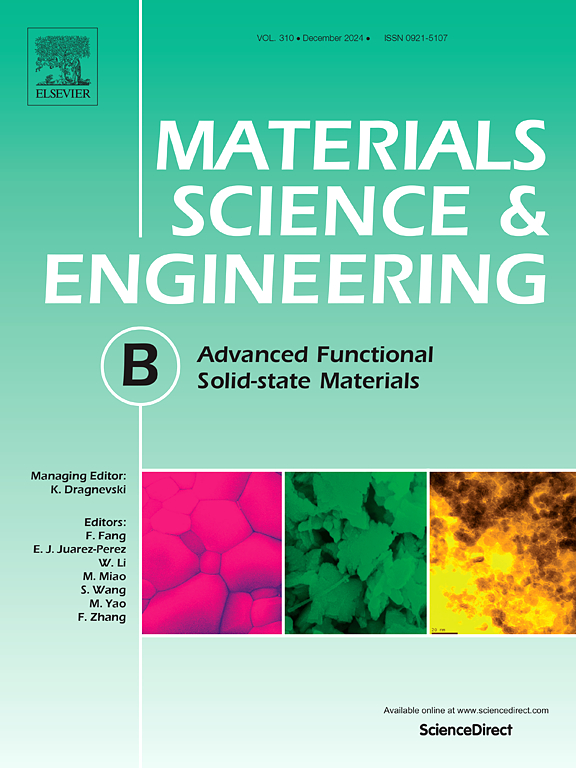Study of photophysical properties on recycling for solar and photo degradation process of Brilliant blue R dye and real industrial wastewater using Bentonite/TiO2 QDs
IF 3.9
3区 材料科学
Q2 MATERIALS SCIENCE, MULTIDISCIPLINARY
引用次数: 0
Abstract
This work presents the synthesis and characterization of a novel bentonite/TiO2QDs (BNT/TD) nanocomposite specifically designed for the degradation of Brilliant blue R dye, a ubiquitous industrial contaminant. BNT/TD nanocomposite was meticulously crafted via a Co-precipitation method. This technique ensured the uniform distribution of nano TiO2 onto the BNT surface. BNT/TD nanocomposite exhibited a significantly enhanced surface area (233.85 m2/g) compared to BNT. Moreover, the nanocomposite possessed a distinguishable bandgap of 3.18 eV as a crucial prerequisite for photodegradation processes. The photodegradation processes of Brilliant blue R dye in presence of BNT/TD was evaluated under different irradiation sources and their remarkable photocatalytic activity, achieving a degradation rate of 17.77 × 10-3 s−1, significantly near relative to TD (20.50 × 10-3 s−1). Furthermore, the reusability of BNT/TD was assessed through eight photocatalytic cycles. Also, the financial photodegradation process cost for 1000 m3 of Brilliant blue R dye was calculated.

求助全文
约1分钟内获得全文
求助全文
来源期刊

Materials Science and Engineering: B
工程技术-材料科学:综合
CiteScore
5.60
自引率
2.80%
发文量
481
审稿时长
3.5 months
期刊介绍:
The journal provides an international medium for the publication of theoretical and experimental studies and reviews related to the electronic, electrochemical, ionic, magnetic, optical, and biosensing properties of solid state materials in bulk, thin film and particulate forms. Papers dealing with synthesis, processing, characterization, structure, physical properties and computational aspects of nano-crystalline, crystalline, amorphous and glassy forms of ceramics, semiconductors, layered insertion compounds, low-dimensional compounds and systems, fast-ion conductors, polymers and dielectrics are viewed as suitable for publication. Articles focused on nano-structured aspects of these advanced solid-state materials will also be considered suitable.
 求助内容:
求助内容: 应助结果提醒方式:
应助结果提醒方式:


